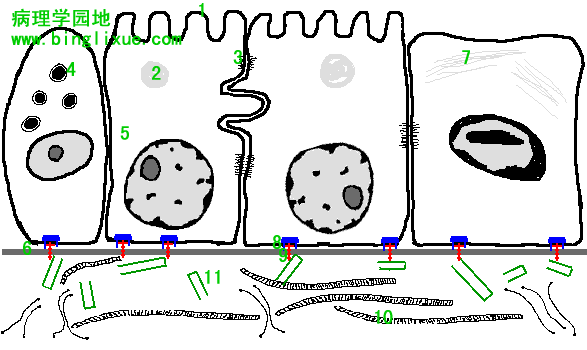

Cellular structure and function are determined by various cellular components. Glandular epithelial cells, such as the lining of the small intestine with a brush border, have microvilli. Glandular epithelial cells may have cytoplasmic mucin vacuoles. Epithelial cells are characterized by the presence of desmosomes that connect them. Many types of cells have cytoskeletal proteins. Squamous epithelial cells may have cytoskeletal elements such as tonofilaments. Cells with neuroendocrine differentiation tend to be rounded and may have cytoplasmic neurosecretory granules. The extracellular matrix (ECM) is composed of a variety of components. An adhesion complex in the cell links to integrin that extends outward. Seen here is a basement membrane. An important component of basement membrane is laminin, which acts as a "lag bolt" to connect cells via integrin to the ECM. Collagen (type IV in basement membrane and types V and VI as fine fibrils) comprises the structural component of ECM that provides shape and stability. Fibronectin is an adhesive protein that acts as a "glue" to hold the various components together.